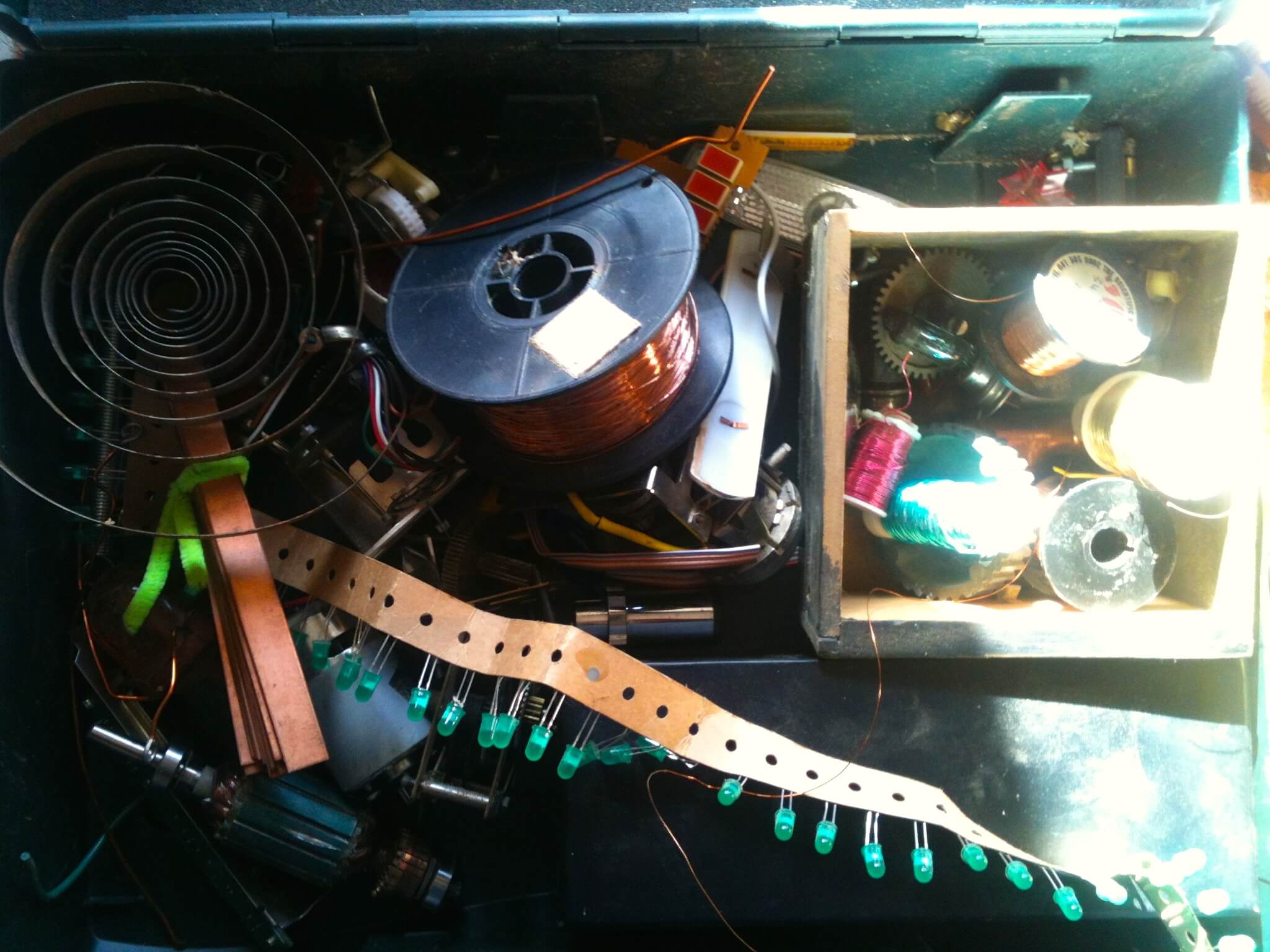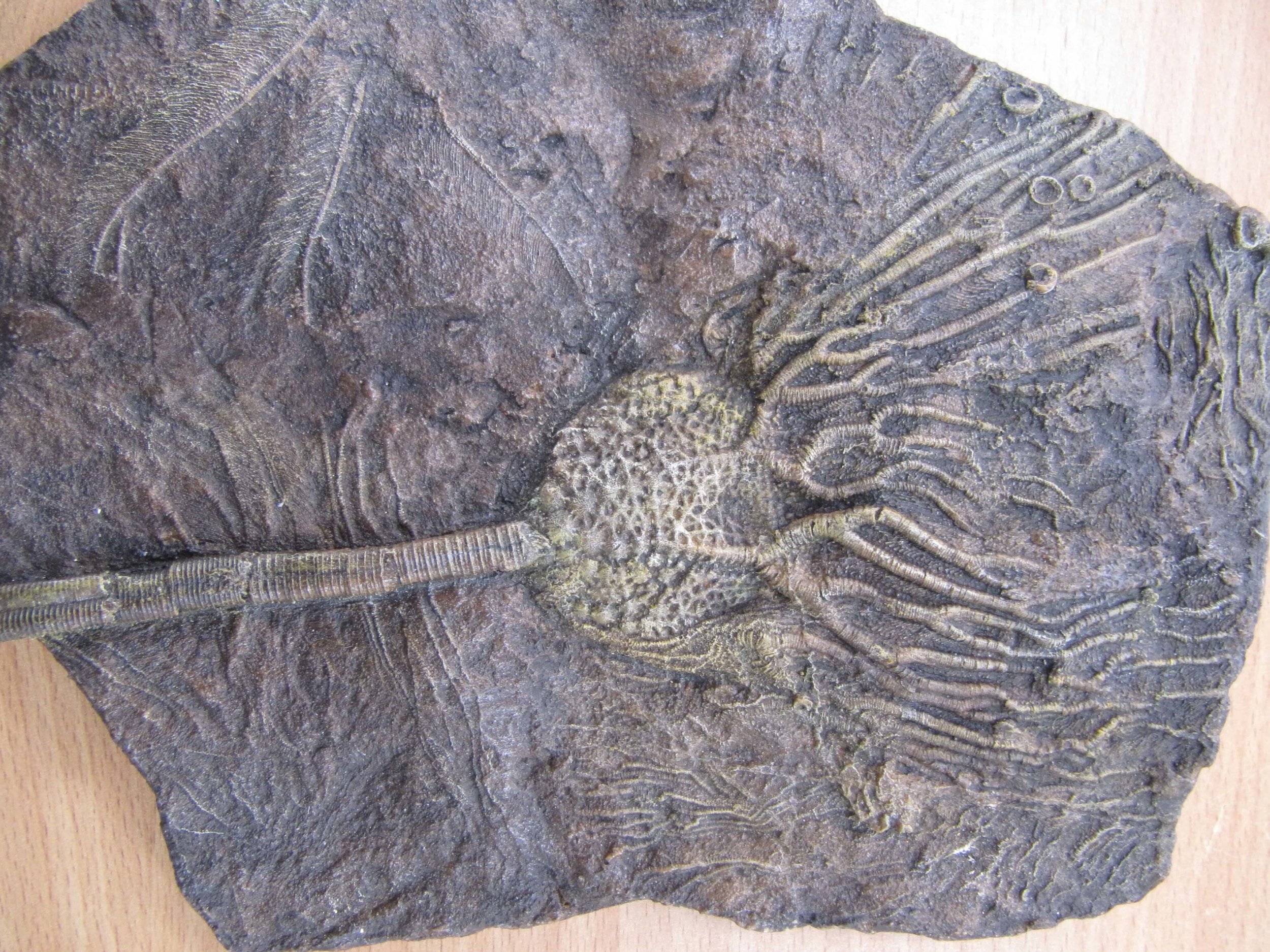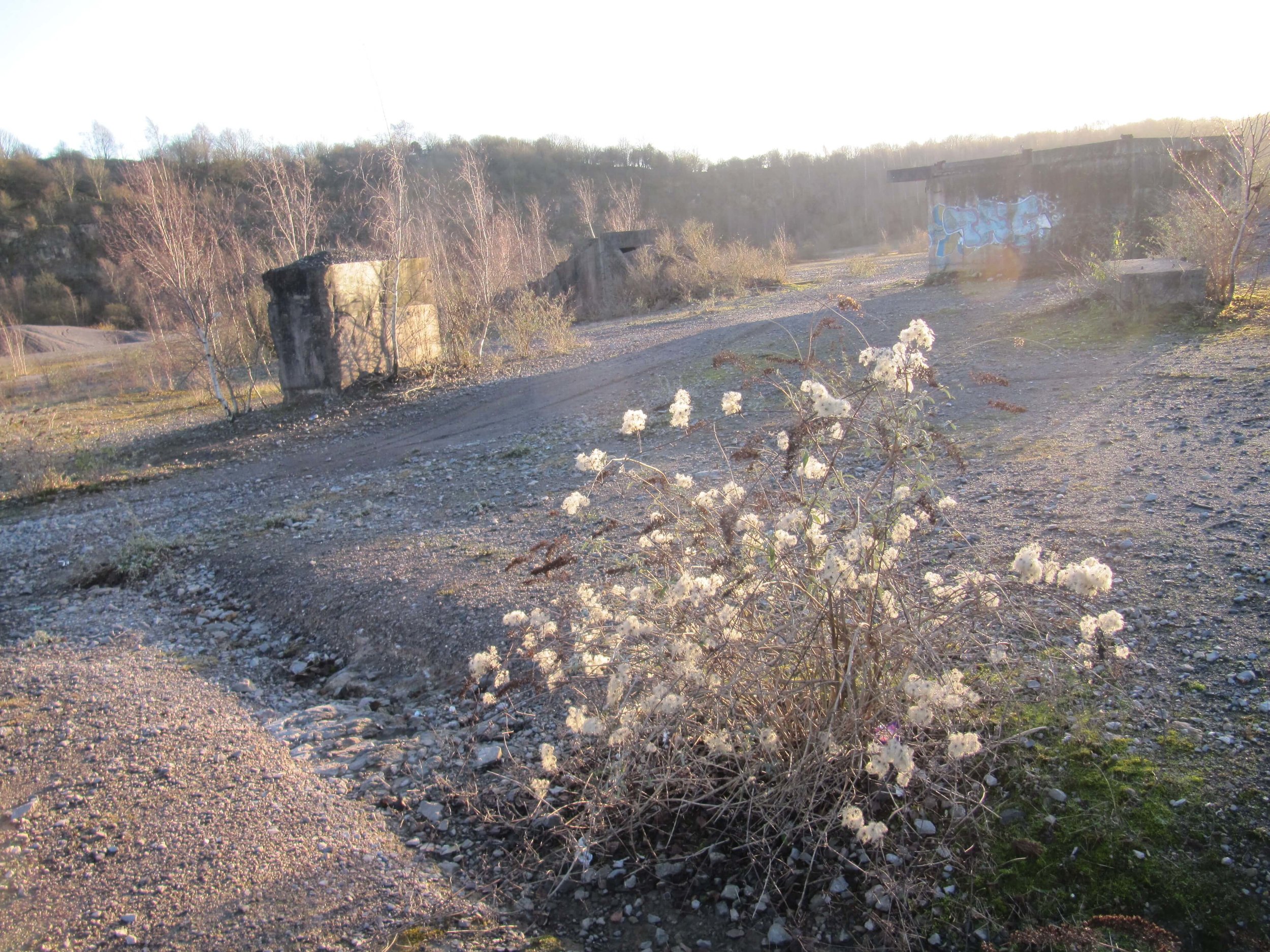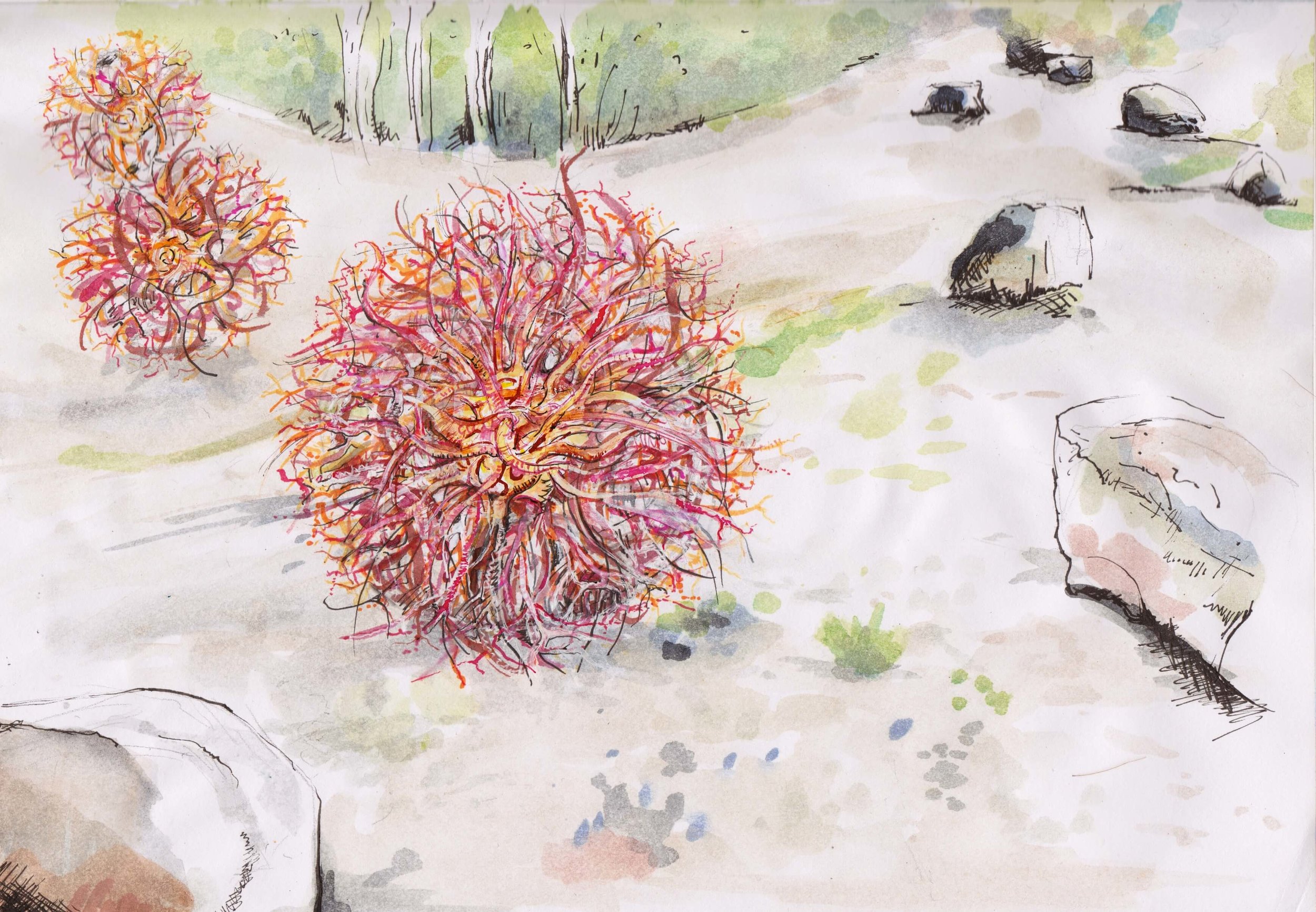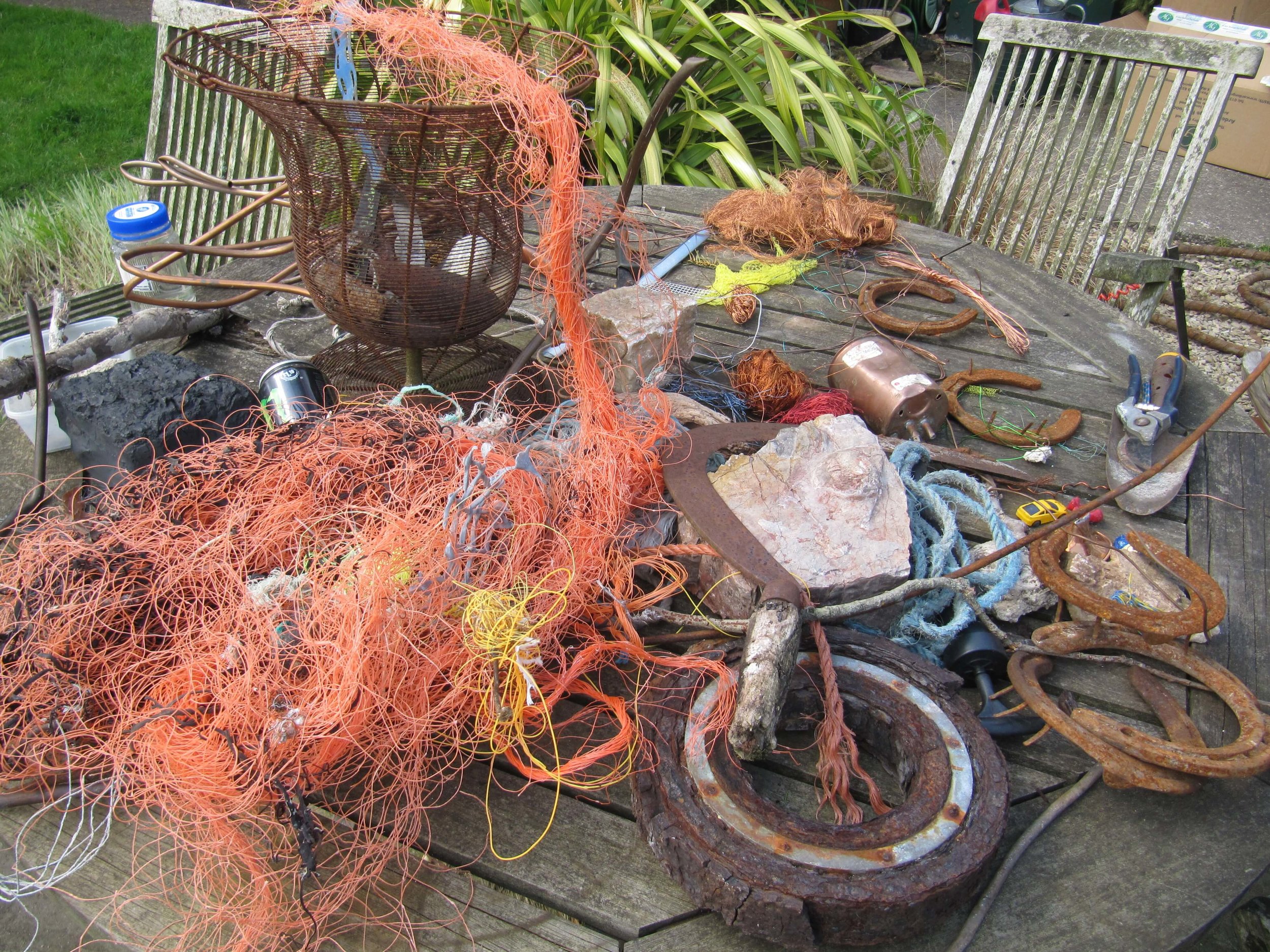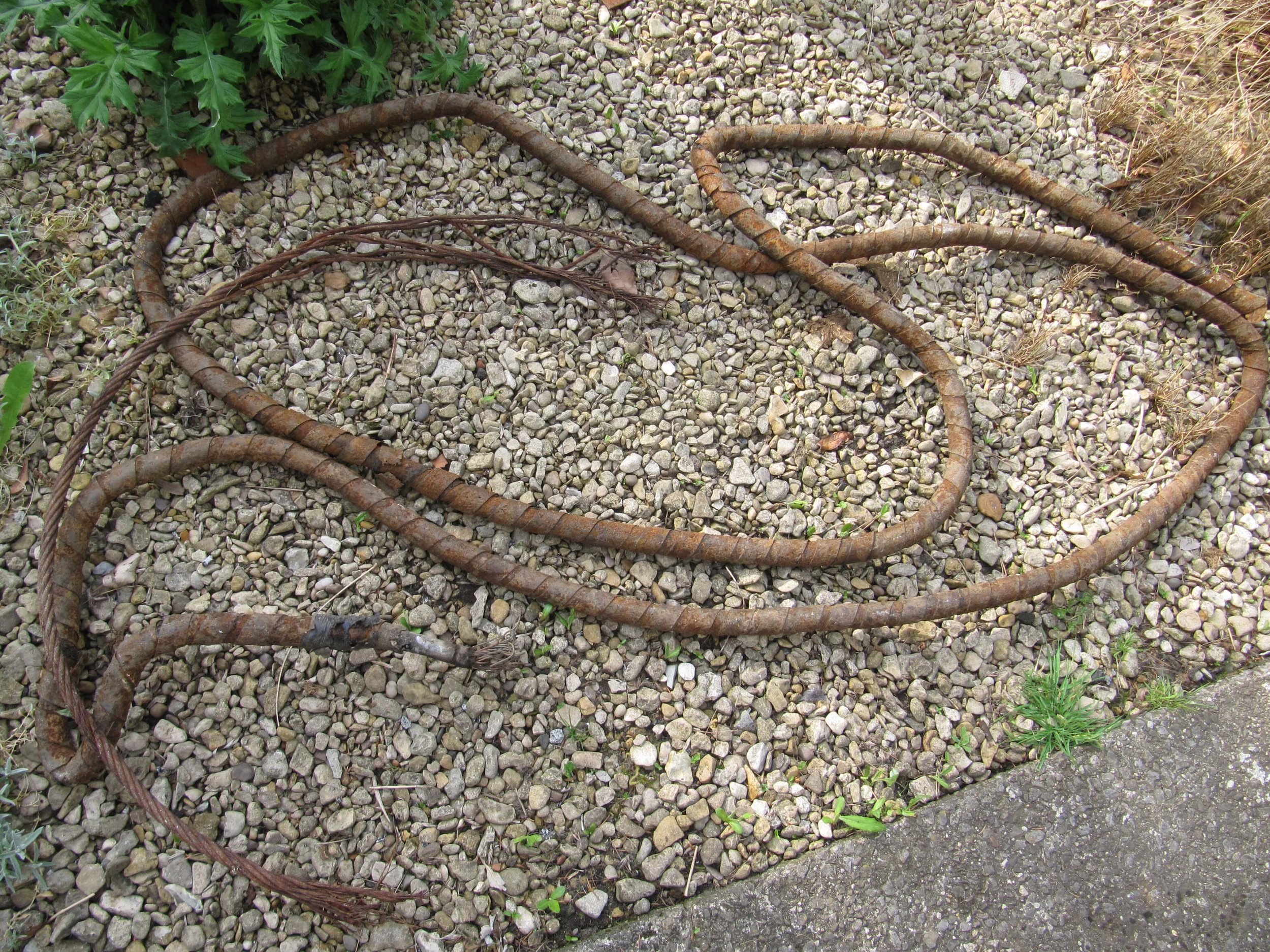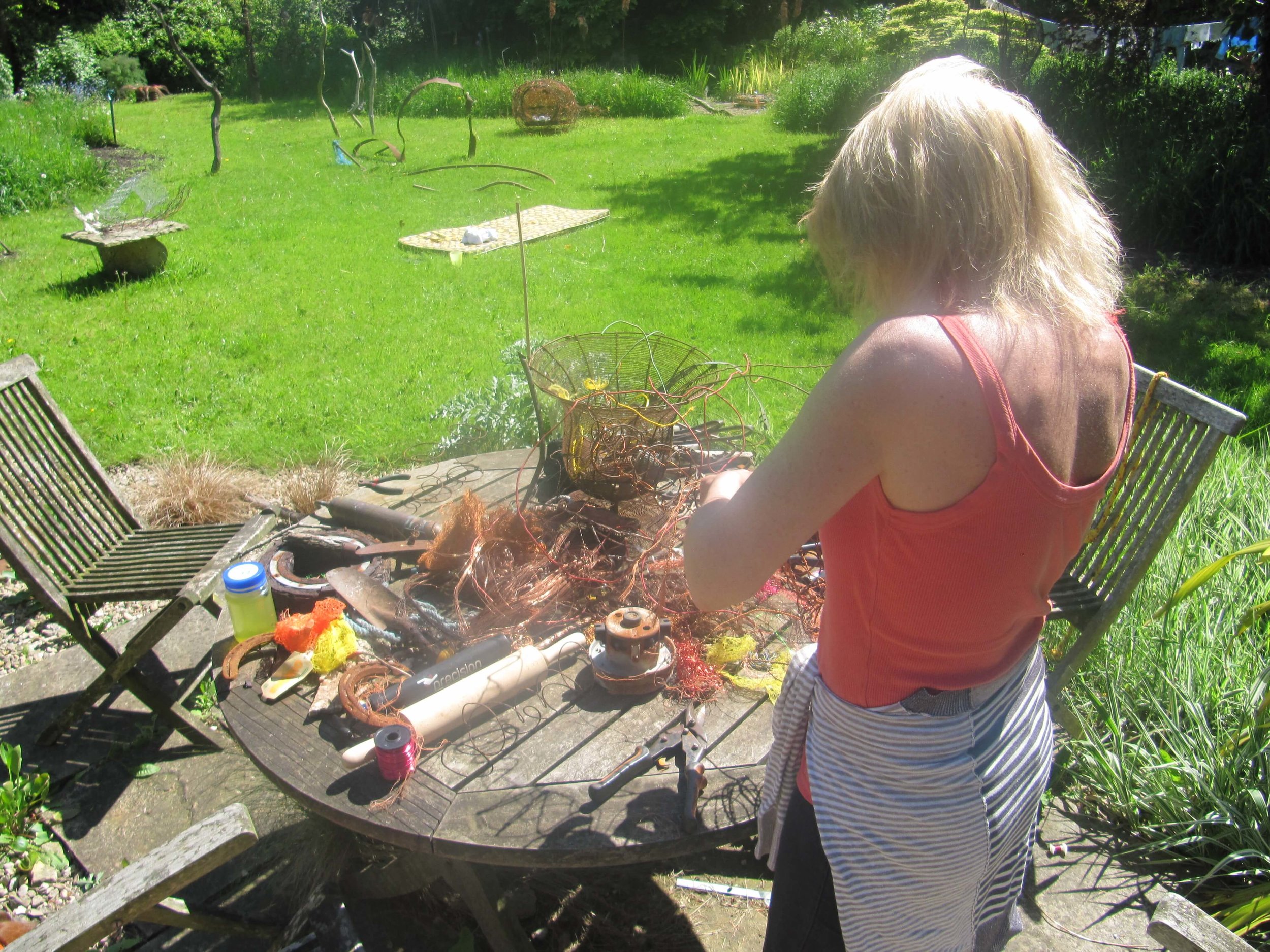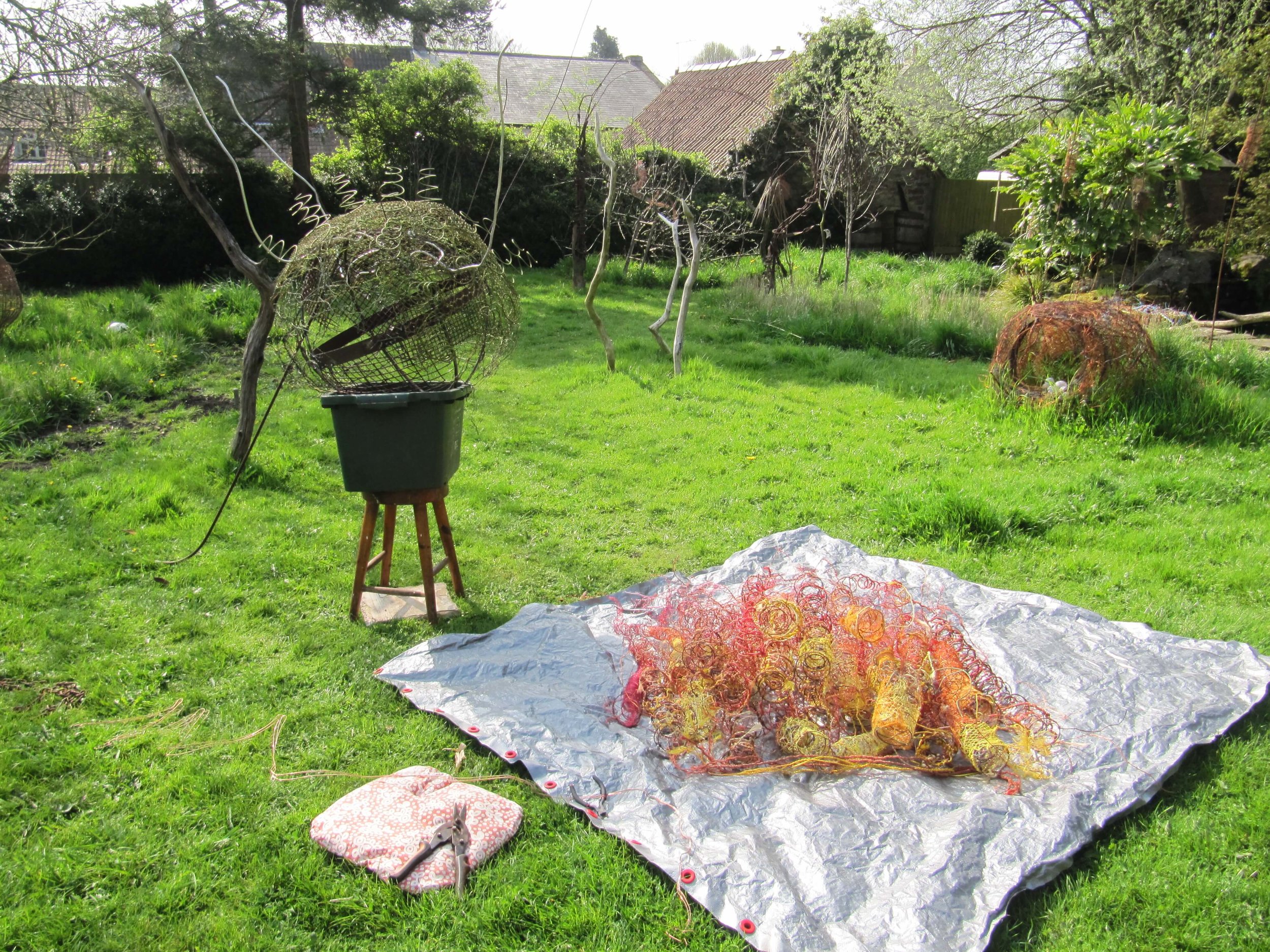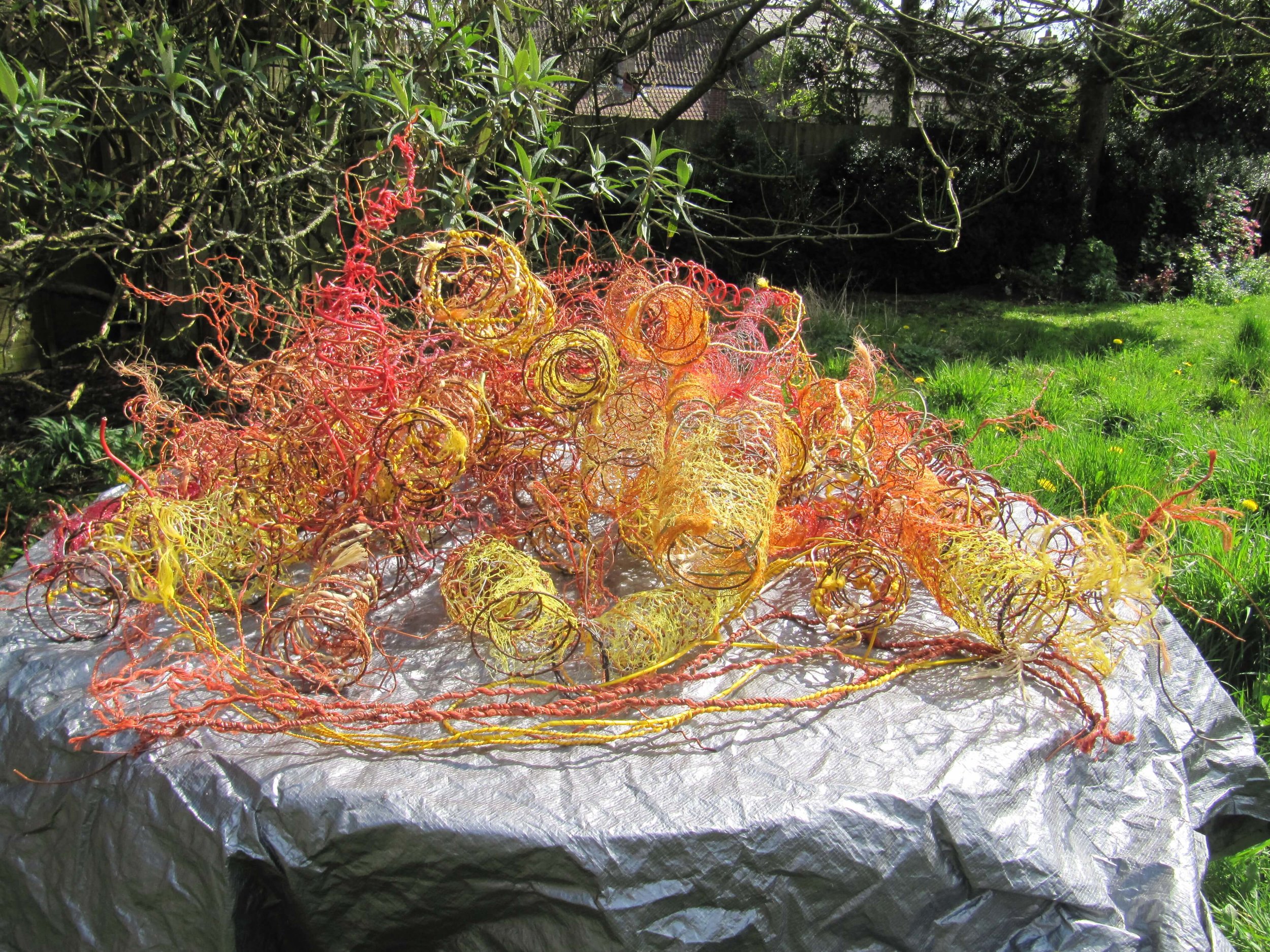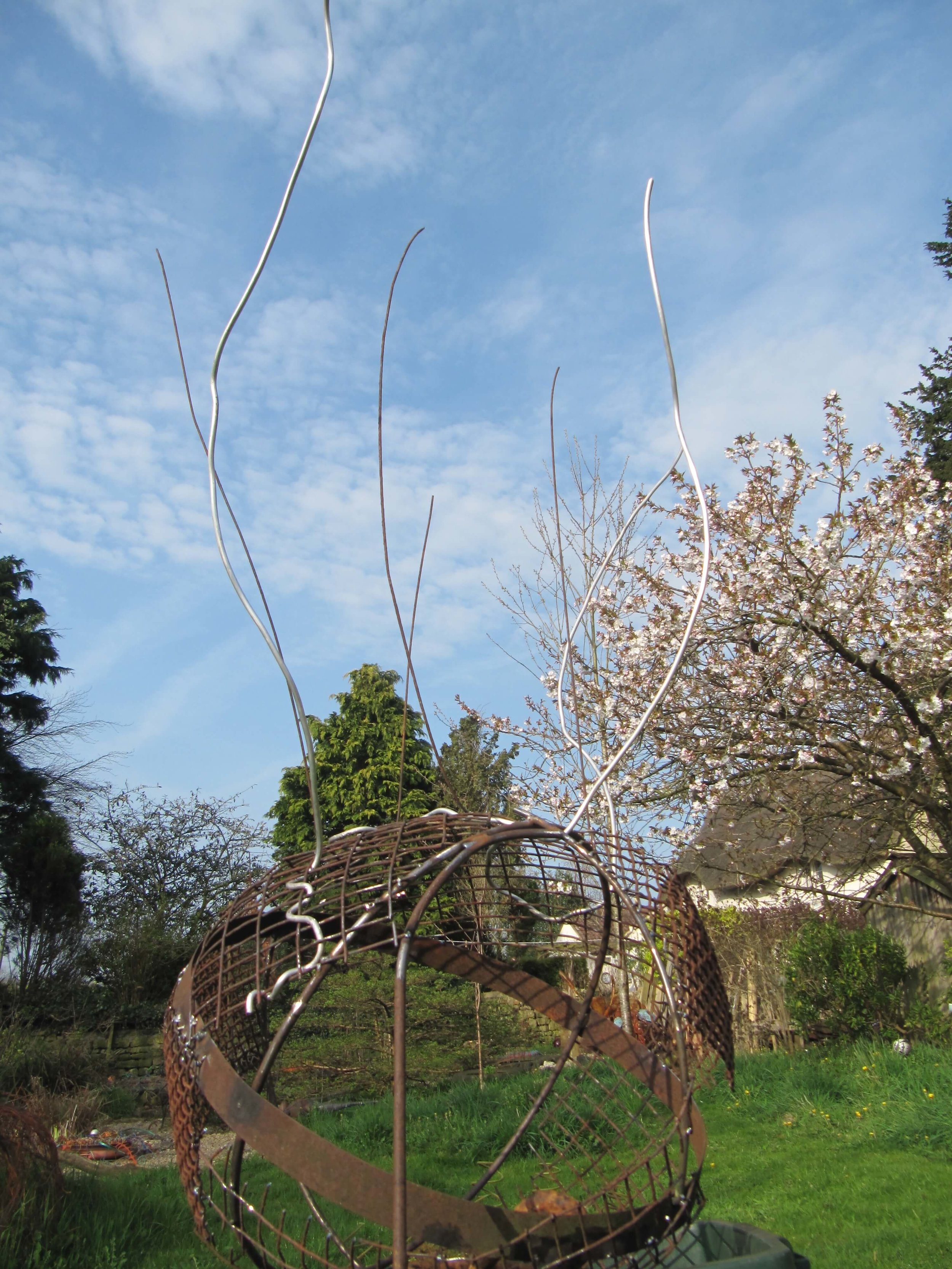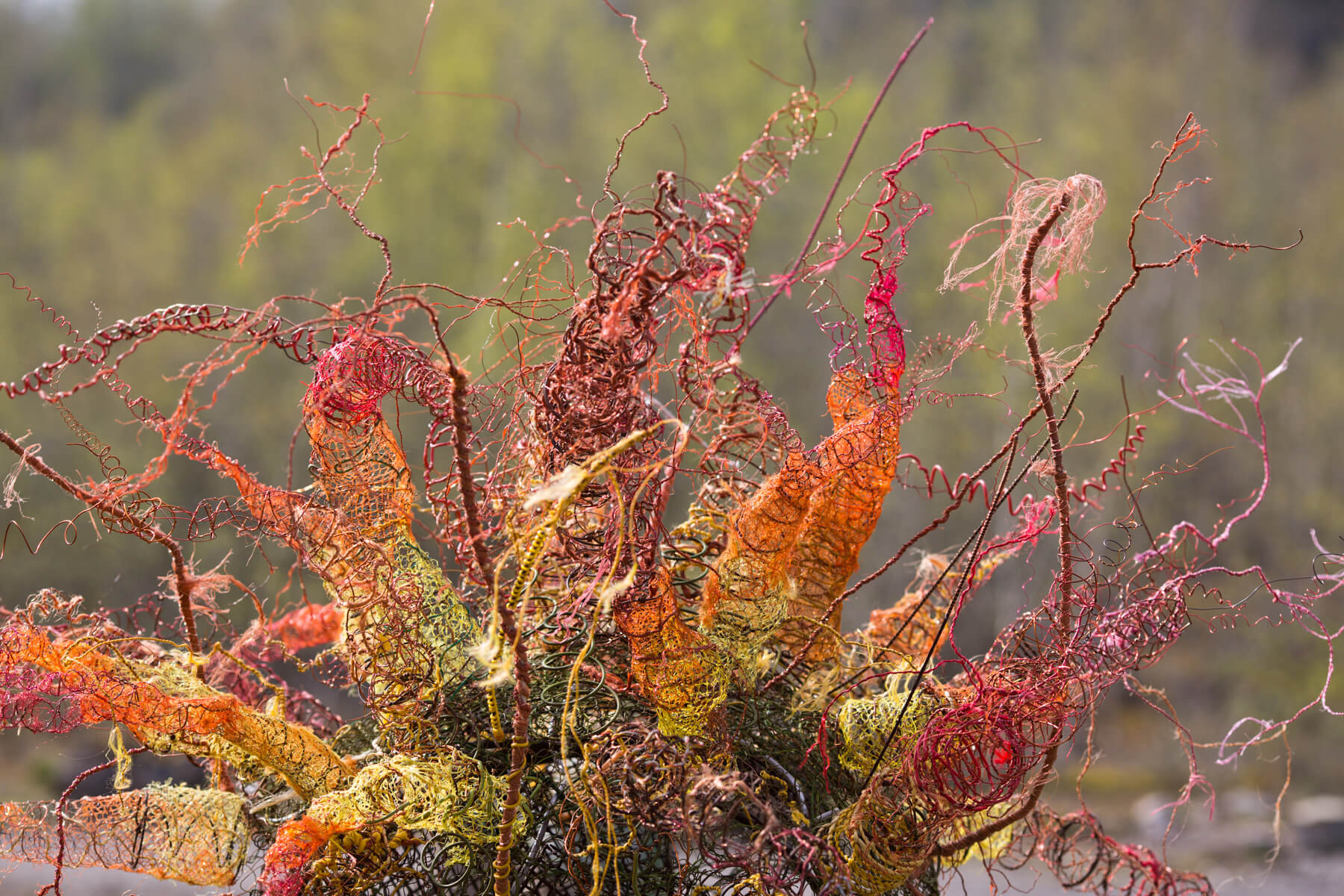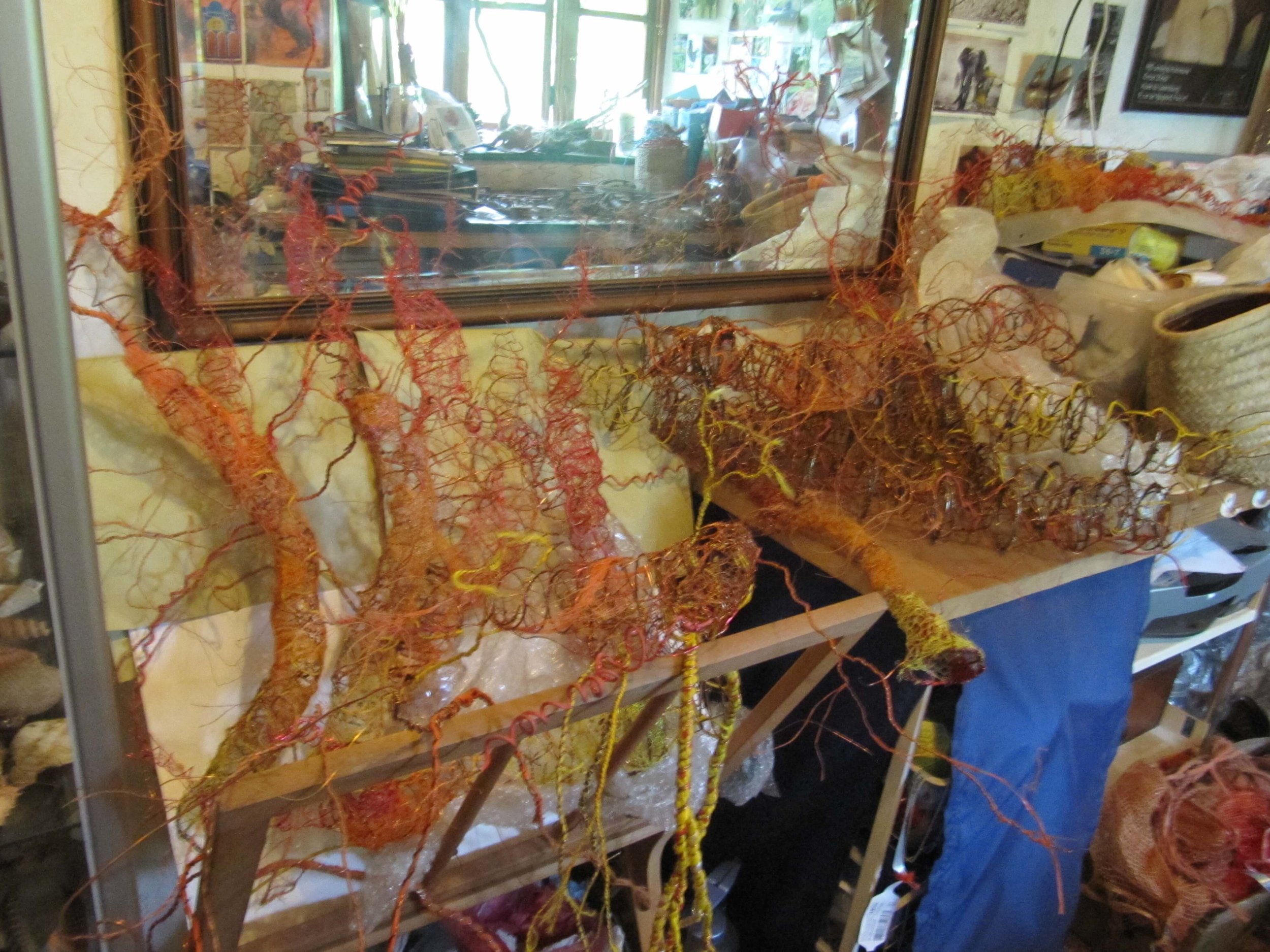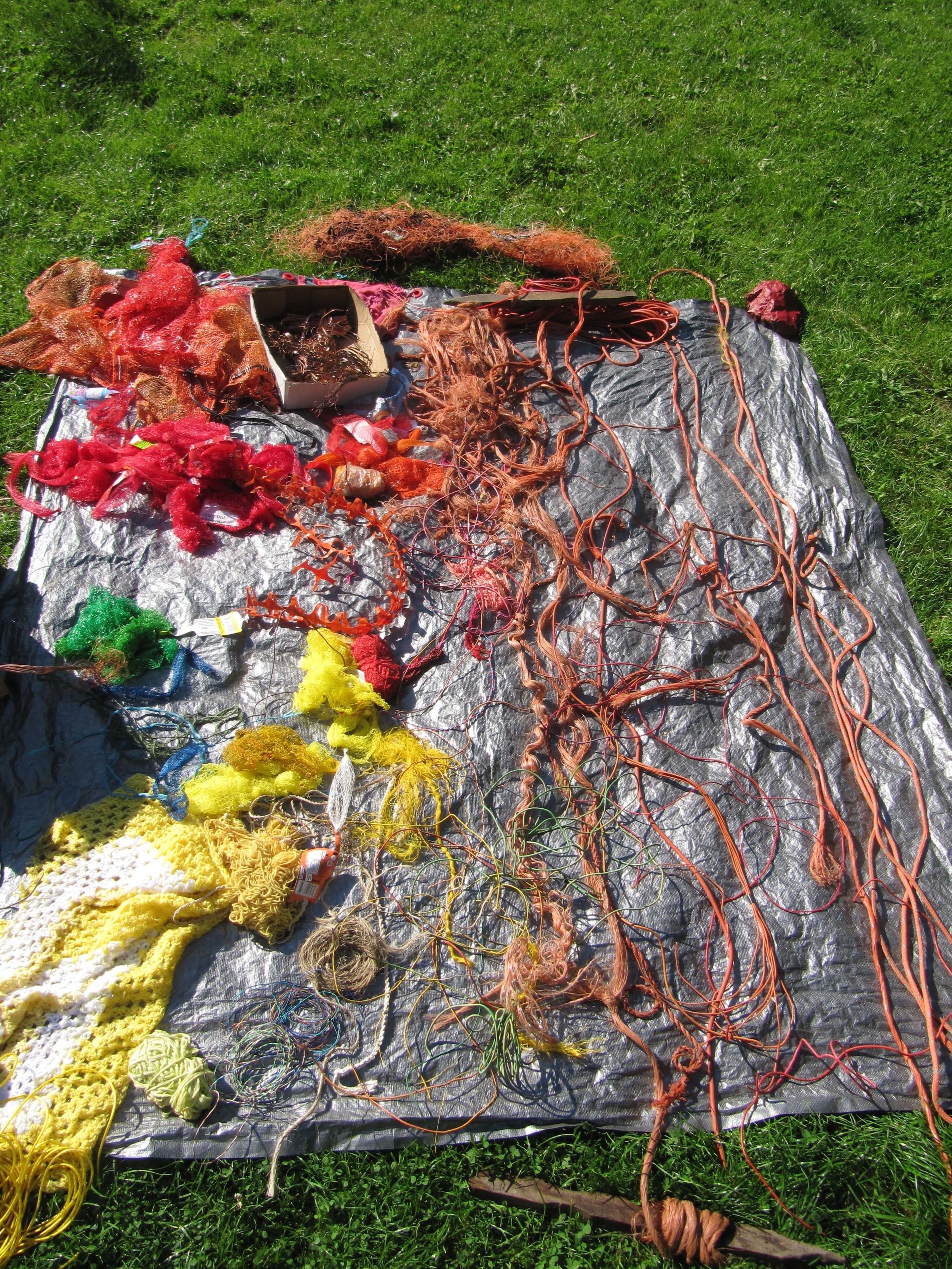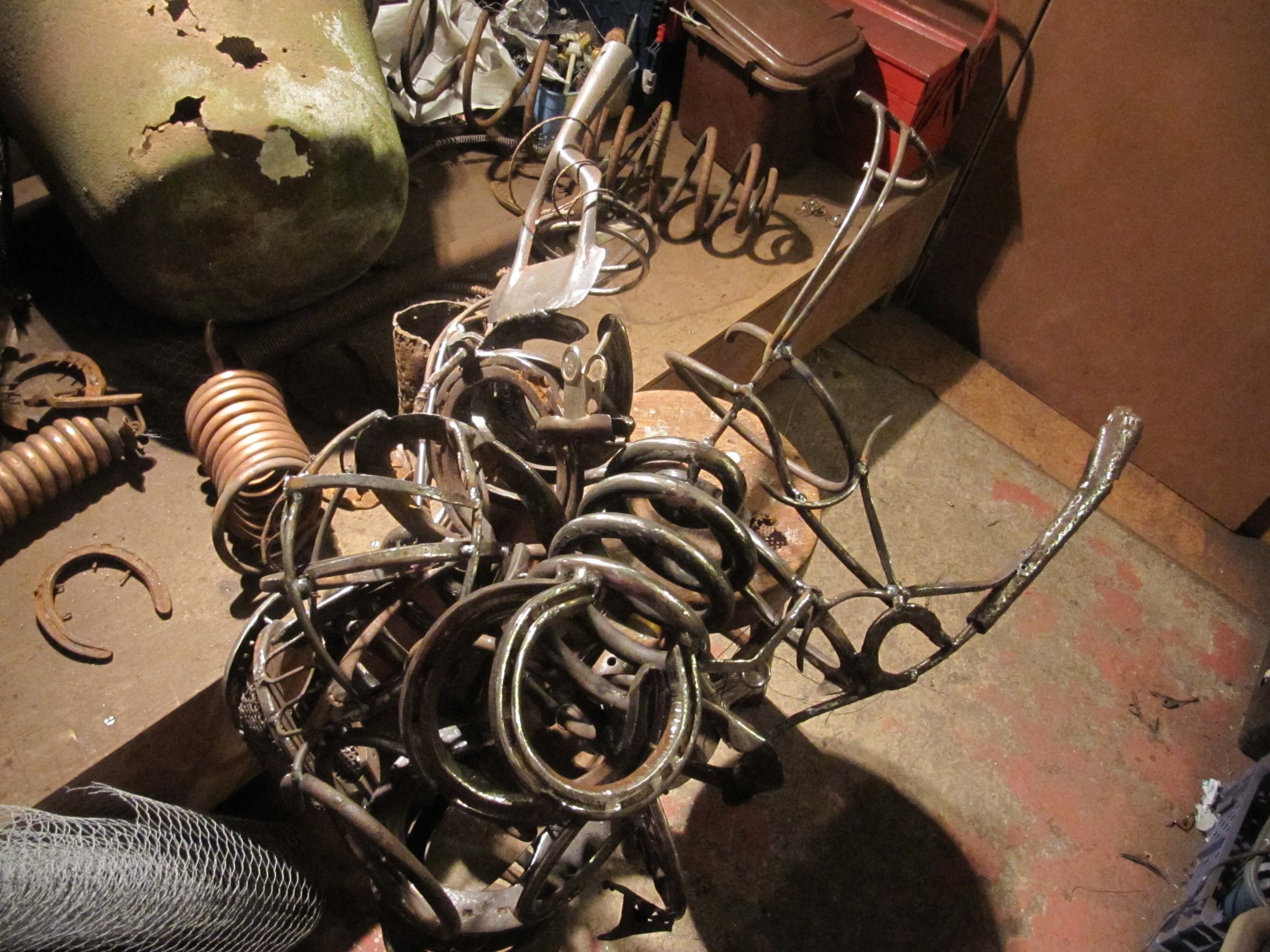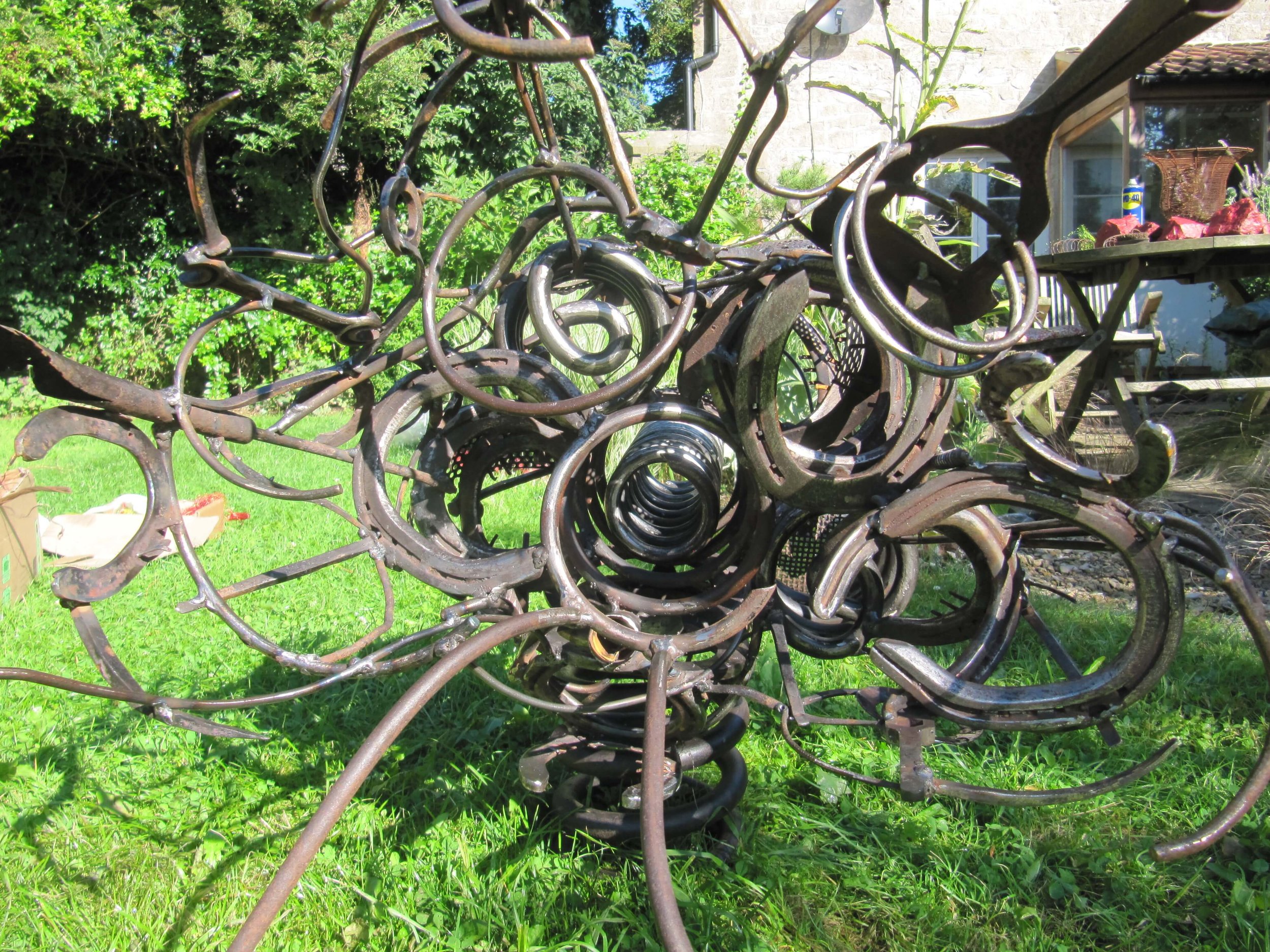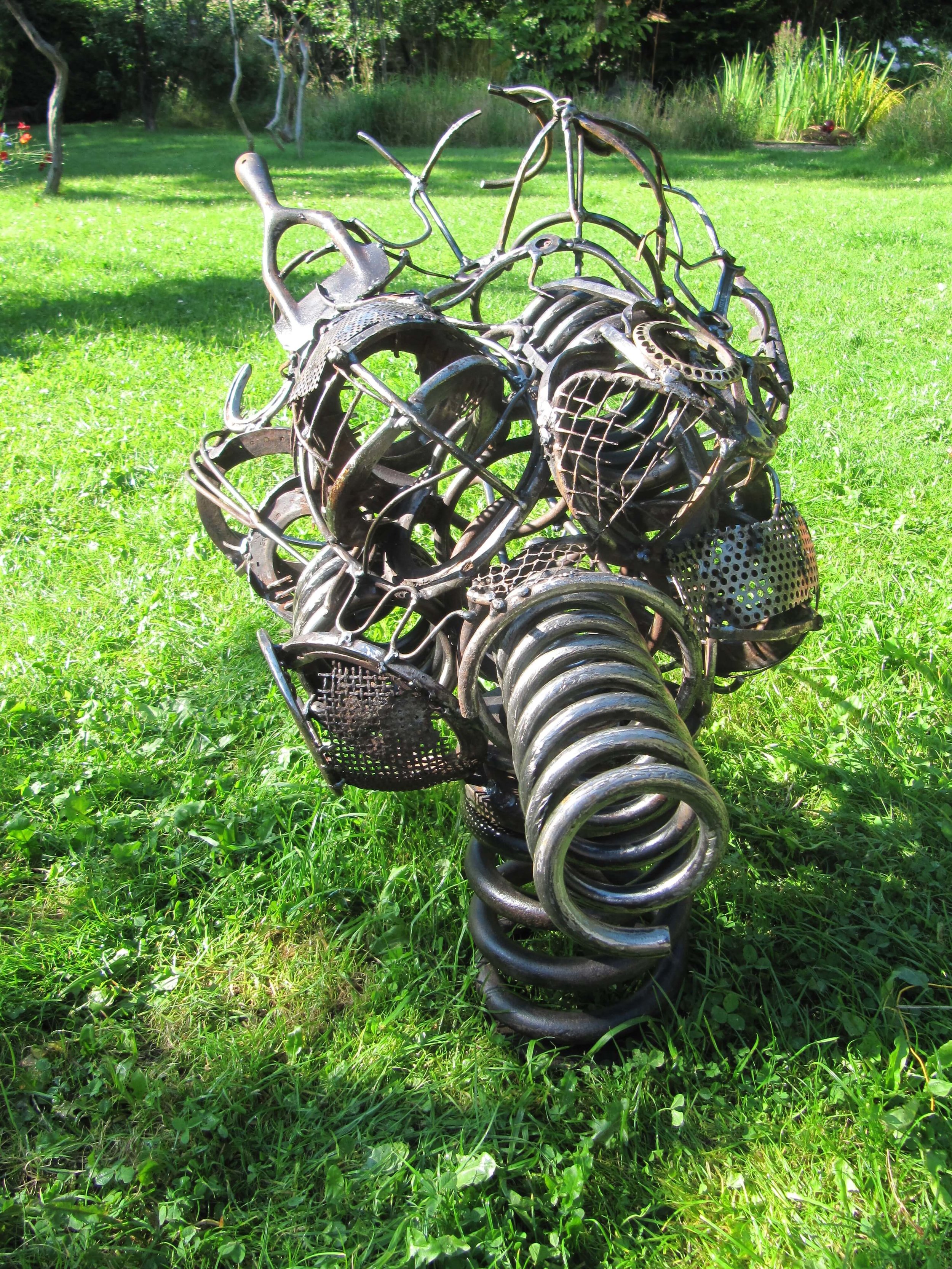The New Year often brings with it an awakening of new (and old) ideas. Having always been interested in the way life forms so often repeat themselves throughout the macro and micro natural world, I was interested to recently discover the term 'convergent evolution'. This describes the independent evolution of similar features in different species - structures that have a similar form or function. The ability, over time, of insects, birds, reptiles and some mammals to fly is one example. David Attenborough's new "Conquest of the Skies" series illustrates this beautifully.
I'm fascinated by certain primal structures, which are echoed everywhere, from tiny microbes to nervous and planetary systems. Lately I've been focusing on spheres, branch-like forms and 'cirri' (tentacles, tendrils, hairy filaments..). Many natural forms combine all these in varying degrees. Through my recent investigation into quarry environments for step in stone, I have been discovering more about ancient sea life forms that existed over 350 million years ago. Locally, in the Mendips, the most dominant rock is carboniferous limestone, which is full of fossiled skeletons, particularly an abundance of crinoids (sea lilies) and corals (e.g. rugose). Although both marine creatures, they are from completely different families, yet have strong similarities, as do diatoms (marine micro-organisms).
Nature's tenacity and persistence is reflected in disused quarry sites. Silver Birch seeds blow in and take root almost immediately and in no time at all, vast cavities of scooped out rock are covered with a multitude of life forms. In addition to fundraising, I've been doing some drawing and thinking about possible site-specific work to install in these spaces for step in stone later this year (see below). At the moment, I like the idea of making 2 metre tumbleweed-like forms that relate to crinoids and rugose corals. They will entail a great deal of work, but an exciting prospect!

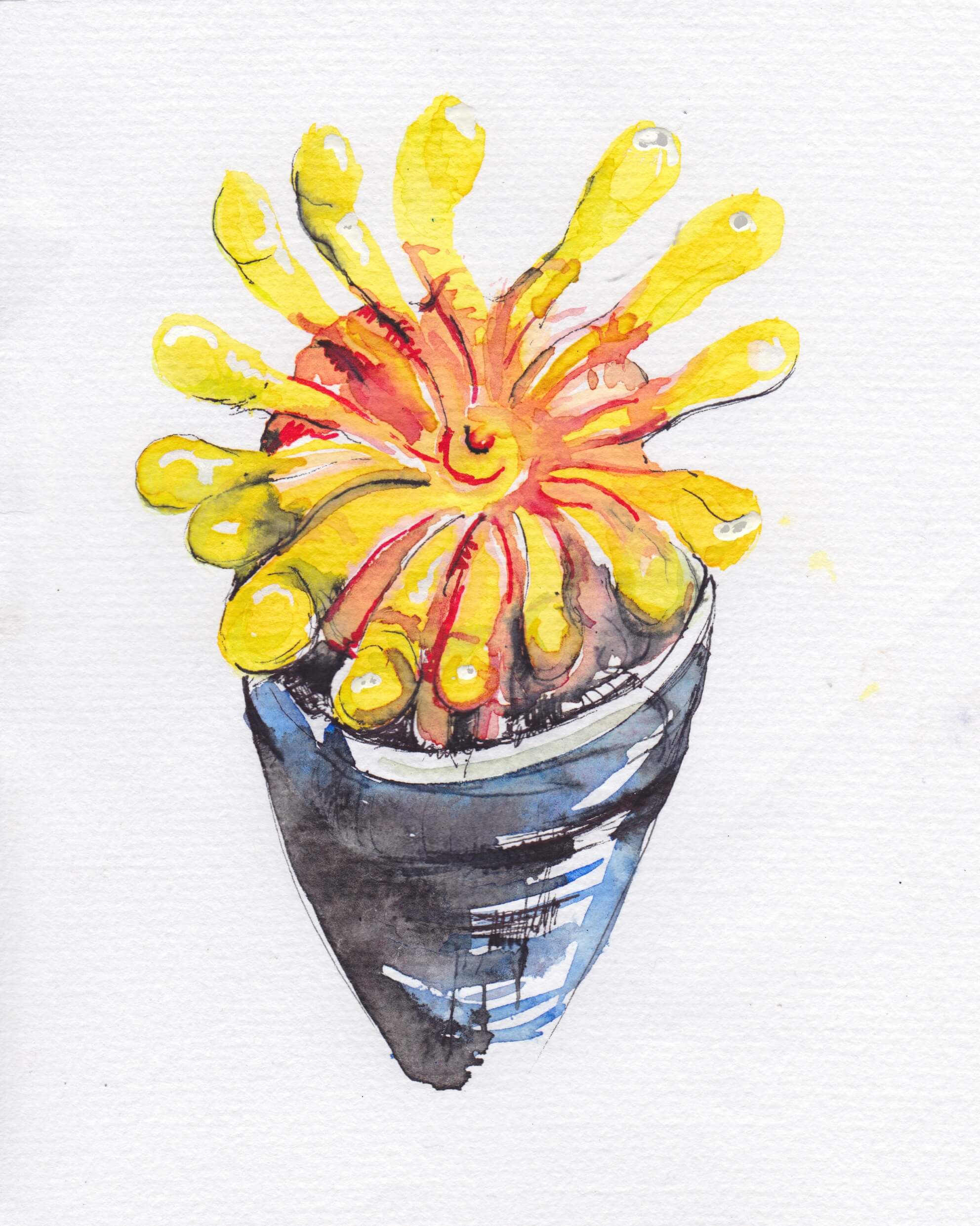

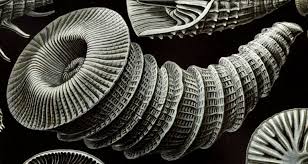
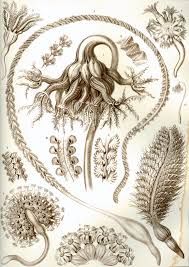
We received well over our crowdfunding target for 'step in stone', have received more funds from a local trust since and now awaiting news from the Arts Council bid - fingers crossed!
Happy New Year!
